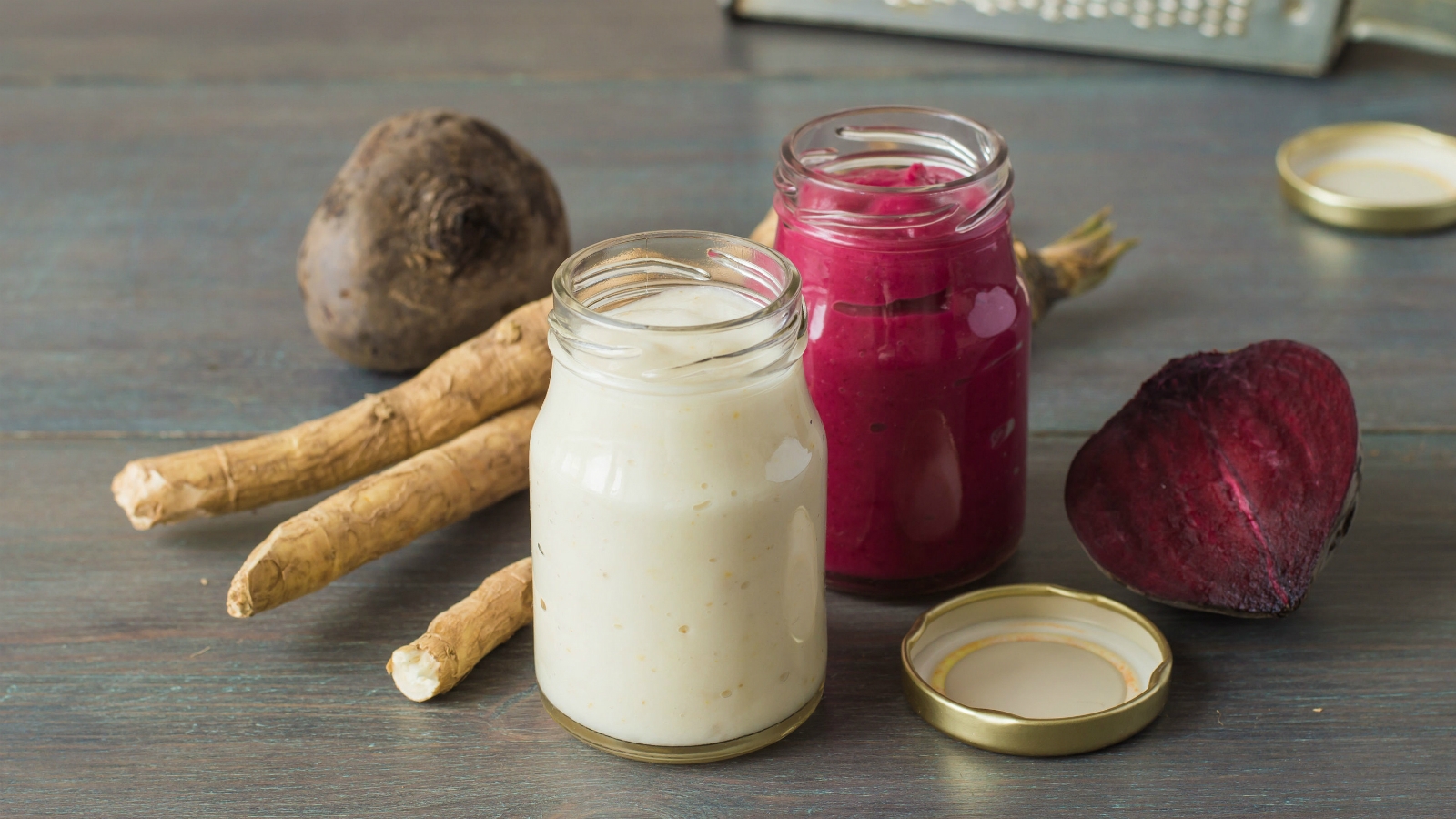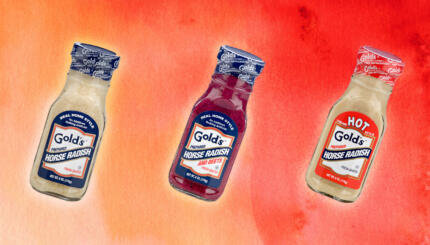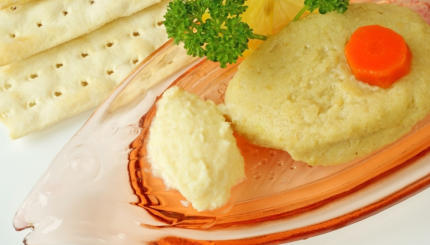Chrain (Horseradish)
Enjoying a pungent Russian tradition.
As Sancho Panza to Don Quixote, faithful R2-D2 to C-3PO, so is chrain (sometimes spelled hrein or chrein) to its gefilte fish. This spicy relish, traditionally made out of beets and horseradish, can be found in any deli, and in the kosher section of many grocery stores. Balancing the relatively bland and somewhat sweet fish cutlet with a much-needed flavorful kick, gefilte fish and chrain are a perfect combination. Yet there’s more to chrain than this. Chrain means “horseradish” in Russian. In the Old Country the plant grew everywhere: backyards, fields, parks. Grandmothers would collect its juicy leaves to use in pickling — when added to the brine, they help pickled cucumbers retain their crunchiness. Slavs and Jews ate chrain in relish form year-round, on sandwiches and with meats and poultry. The popularity of this easy-to-make, cheap topping was extremely widespread.
While a sidekick every other week of the year, chrain makes a solo appearance on Passover, acting as maror — the bitter herb on the seder plate. Many Jews buy the prepackaged supermarket brands, but some people have the tradition of going back to chrain’s roots — that is, the roots of the horseradish plant, which they themselves grind to create fresh and pungent maror.
My family treasures a story of how my great-uncle, as a child, invited a friend over to his house. When his mother, who was making a batch of chrain, stepped out of the kitchen, my great-uncle lured his friend in. “My mother is making delicious soup, and if you want we can have some,” he said. “Smells heavenly, wanna check it out?” The unsuspecting friend opened the pot, where the relish sat, and inhaled — a lungful of chrain-scented air. Fresh horseradish is incredibly pungent, and even seasoned chrain-eaters sniff it with caution; the story goes that the boy almost fainted, coughing, crying, and laughing at the same time.
Aside from such pranks, chrain has a prominent place in old-school Russian idioms. The meanings it takes on are diverse, and oftentimes have something to do with the root’s phallic shape. “Chrain be with you,” for instance means “to hell with you”; and you can probably surmise the meaning of “why the chrain would I want to do this” as well.
Yet, you do not need to be Eastern European, and you don’t need to wait for Passover, to put together your own fresh batch of chrain. Made from scratch, it is a delicious alternative to mustard and wasabi sauces (indeed, horseradish belongs to the same Brassicaceae family of plants as mustard and wasabi). It works with deli meats, grains, or as a dip for baby carrots and crackers. Just be careful it doesn’t knock you off your feet!
In America, horseradish root is mostly available in Russian specialty shops and health-food stores.
Written with Efim and Irina Marmer.
Ingredients
2 1/2 Tablespoons sugar
1 Tablespoon lemon juice
10 oz raw horseradish
5 oz raw beets
1 Tablespoon salt
1/2 cup white vinegar
1 cup warm boiled water
Directions
For White Chrein:
Peel the horseradish and grind it finely in the food processor. Mix it together with all the other ingredients and refrigerate in a tightly closed jar. It will be ready to eat after a few hours.
For Red Chrein:
Peel the beets and horseradish and let them both sit in cold water for about an hour. Drain and grind them finely. Mix together with all the other ingredients and refrigerate in a tightly closed jar — it will be ready in a few hours. .
While these two recipes extend many centuries back, some modern variations also call for mayonnaise — try adding 1-2 tablespoons to taste.



